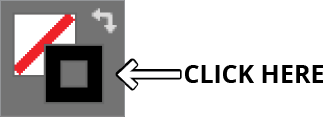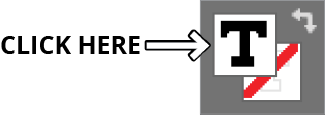Indulge in a comprehensive tutorial on how to create a 2-page spread using Adobe InDesign. This guide explores the intricacies of setting up documents, bringing in pictures, and manipulating text tools to create an appealing magazine-like layout.
Key Insights
- The tutorial explains how to set up a document as a two-page spread, including size specifications, margins, and bleed options.
- Emphasis is placed on the correct procedure to bring pictures into the layout and position them correctly.
- Designing a "mini" Time Magazine cover, which includes drawing borders, creating specific colors, and adjusting stroke weight, is covered.
- Utilizing the Type tool is explored in the context of adding text to the layout and adjusting font type, size, and fill color.
- Details about setting a tagline, creating a text frame, and adjusting text size, font, leading, and space before are highlighted.
- The tutorial concludes with a section on saving the document and instructions for printing as a spread.
Master the art of creating 2-page spreads in InDesign with our detailed tutorial covering topics such as defining colors, facing pages, and color swatches.
This exercise is excerpted from Noble Desktop’s past Adobe InDesign training materials and is compatible with InDesign updates through 2020. To learn current skills in InDesign, check out our InDesign Bootcamp and graphic design classes in NYC and live online.
Topics Covered in This InDesign Tutorial:
Facing Pages, Color Swatches, Defining Colors
Exercise Preview

Exercise Overview
2-page spreads can be a little tricky to create, but we make it easy for you in this exercise. We’ll cover facing pages and page numbering issues to show you how to do it right.
Setting the Document up As a 2–Page Spread
- From the File menu, choose New > Document and set:
- Set Width to 8 in and Height to 10.75 in.
- Pages: 2
- Start #: 2
- Check on Facing Pages if it isn’t already.
- Expand the Margins section if needed, and make all Margins 0 in.
- Expand the Bleed and Slug section if needed, and make all Bleed options 0.125 in.
Click Create.
In the InDesign menu (Mac) or Edit menu (Windows), choose Preferences and then Units & Increments.
-
On the right, set the Ruler Units as follows:
Origin: Page (DON’T forget this option!) Horizontal: Picas Vertical: Picas Click OK.
Open the Pages panel (Window > Pages).
-
The pages should look like a spread as shown below, with a line in the middle that separates the left and right pages. If they are not a spread, you didn’t check Facing Pages when creating the document, or you didn’t enter 2 as the Start #. To fix it go into File > Document Setup, check Facing Pages, and enter 2 as the Start Page #. Then click OK.

NOTE: The reason this worked is because even numbered pages are always on the left and odd pages on the right.
Bringing in the Picture
Go into File > Place.
From the InDesign Class folder, select time.tif and click Open.
-
The cursor should now be a loaded image icon
 with a preview of the photo.
with a preview of the photo.Position the top left of this cursor at the red bleed guide (which is 1⁄8 in off the top left of the page) and click once to place the image.
Making the “Mini” Time Magazine Cover
We are going to put a box around the jeep and put some type in it to make it look like a mini Time magazine cover so your eye is drawn to the action.
Choose the Rectangle tool
 .
.On the right-hand page, draw a box around the jeep that is shaped somewhat like a magazine cover (with the jeep near the bottom). Don’t worry about being too exact. Next we’ll type in the exact measurements to perfect it.
-
In the Control panel, make sure the top left reference point
 is chosen, then enter the four values shown (X/Y and W/H):
is chosen, then enter the four values shown (X/Y and W/H):
When done, press Return (Mac) or Enter (Windows) to apply the change.
We want to make the frame a specific color, but before we go ahead and create the color, let’s make sure the stroke color is active. Open the Swatches panel (Window > Color > Swatches).
-
As shown below, at the top left of the Swatches panel, make sure the Stroke swatch is in front (active). If it’s not, click it to make it active.

Now we can create the color. From the Swatches panel menu
 at the top right, choose New Color Swatch.
at the top right, choose New Color Swatch.-
Leave Name with Color Value checked and set the following:
Color Type: Process Color Mode: CMYK Color Values: 0% Cyan, 100% Magenta, 100% Yellow, 0% Black Add to CC Library: Uncheck this option if shown NOTE: If we did not uncheck Add to CC Library, this color would be saved into a shared library available for all documents. We only want to use the color in this document.
-
Click OK.
Although it’s hard to see, the stroke is already colored with that swatch!
-
Let’s make the line thicker. As shown below, in the Control panel, make the Stroke weight 4 pt.

Let’s put some type into this box. With the Type tool
 , click in the frame and type in TIME (in all caps!).
, click in the frame and type in TIME (in all caps!).Select that text and make it 44 pt Adobe Caslon Pro Regular. (NOTE: This font is listed under C.)
-
As shown below, at the top left of the Swatches panel, make sure the type’s Fill swatch is in front (active). If it’s not, click it to make it active.

In the Swatches panel, click the red color you just created (it’s named C=0 M=100 Y=100 K=0). That’s how you color type.
Before we forget, center the text with the Align center button
 in the Control panel.
in the Control panel.The type is too close to the top of the frame, so go into Object > Text Frame Options.
Under Inset Spacing, uncheck the link button
 so it looks like this:
so it looks like this: 
Make the Inset Spacing, Top: 0p4
Click OK.
Setting the Tagline
For the type below the image, create a text frame in the white area at the bottom of the right page, making sure the frame sits entirely on the right page—no part of the frame should fall onto the left page!
-
Choose the Selection tool
 (make sure the text frame is selected) and enter the following specs. (Be sure to click the top left reference point
(make sure the text frame is selected) and enter the following specs. (Be sure to click the top left reference point  in the Control panel):
in the Control panel):X: 2p1 W: 28p6 Y: 52p1 H: 11p8 -
Using the Type tool
 , type in the following three lines of text:
, type in the following three lines of text:If you think watching a volcano in a movie is frightening, (press Shift–Return (Mac) or Shift–Enter (Windows))
imagine watching one in a rearview mirror. (press Return (Mac) or Enter (Windows))
The world’s most interesting magazine.
-
Select the top two lines of type. Make them 14/20 Minion Pro Regular. (This specifies 14 pt size and 20 pt leading. See the sidebar for an explanation of typographic shorthand.)
Typographic Shorthand
In typography, a common shorthand is to put the font size and leading together.
For example, 9 pt size type with 12 pt leading may be written 9/12.
- Select the next line. Make it 11/20 Myriad Pro Bold Condensed.
- Also set the Space Before
 to 3p (that’s in the Paragraph panel).
to 3p (that’s in the Paragraph panel). Go to File > Save As, name it yourname-timeMagazineAd.indd and save it into the InDesign Class folder.
Printing As a Spread
This file is a spread made up of two pages that are next to each other. If you want to print both pages together on the same sheet of paper, here’s how to do that.
-
Go into File > Print and set the following:
- Choose the appropriate printer at the top.
- Check on Spreads.
- On the left, click on the Setup section.
- Set Paper Size to US Letter (Mac) or Letter (Windows) or larger if your printer is capable.
- Set Orientation to Landscape
 (the second icon).
(the second icon). - Check on Scale To Fit.
- Click the Print button.



